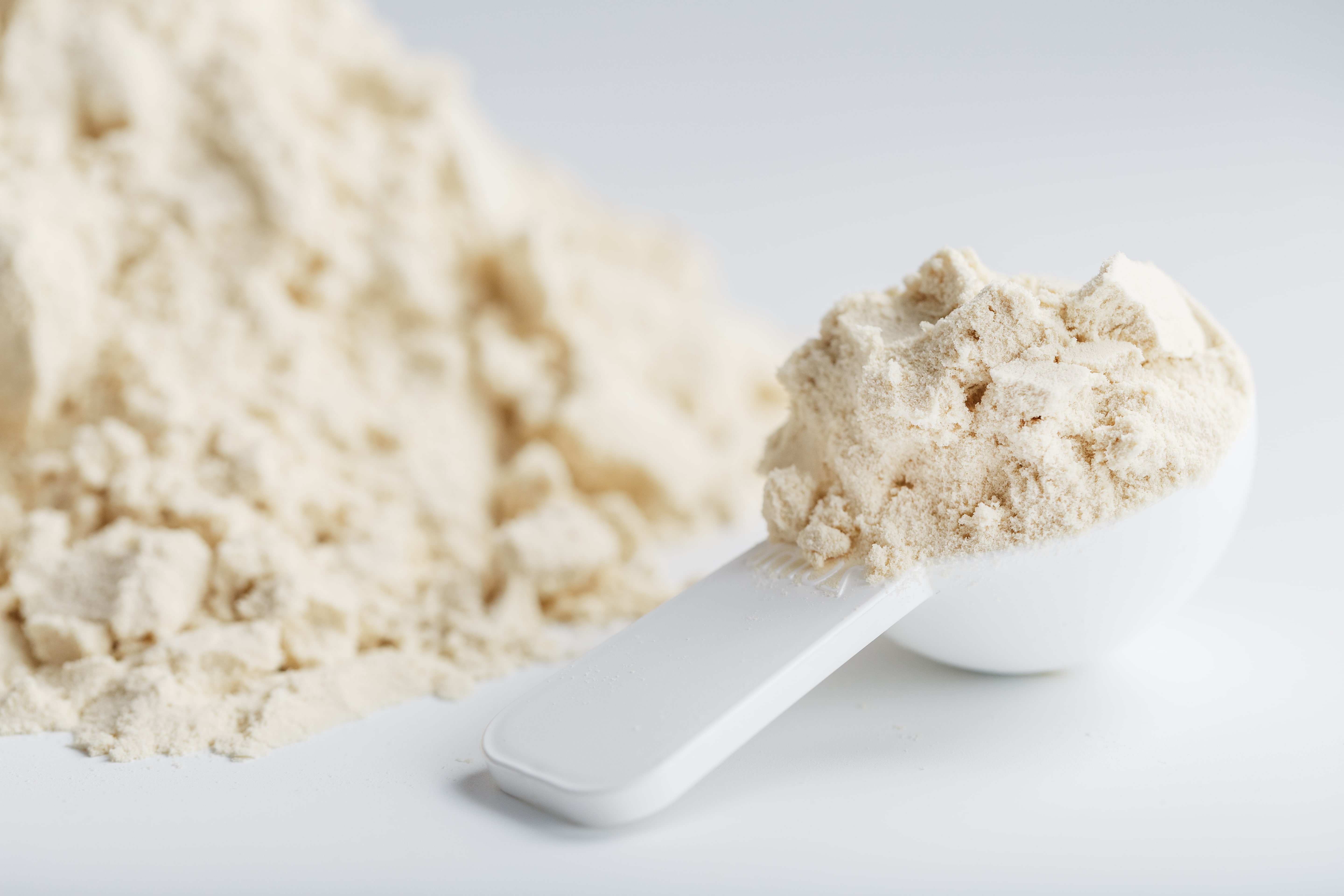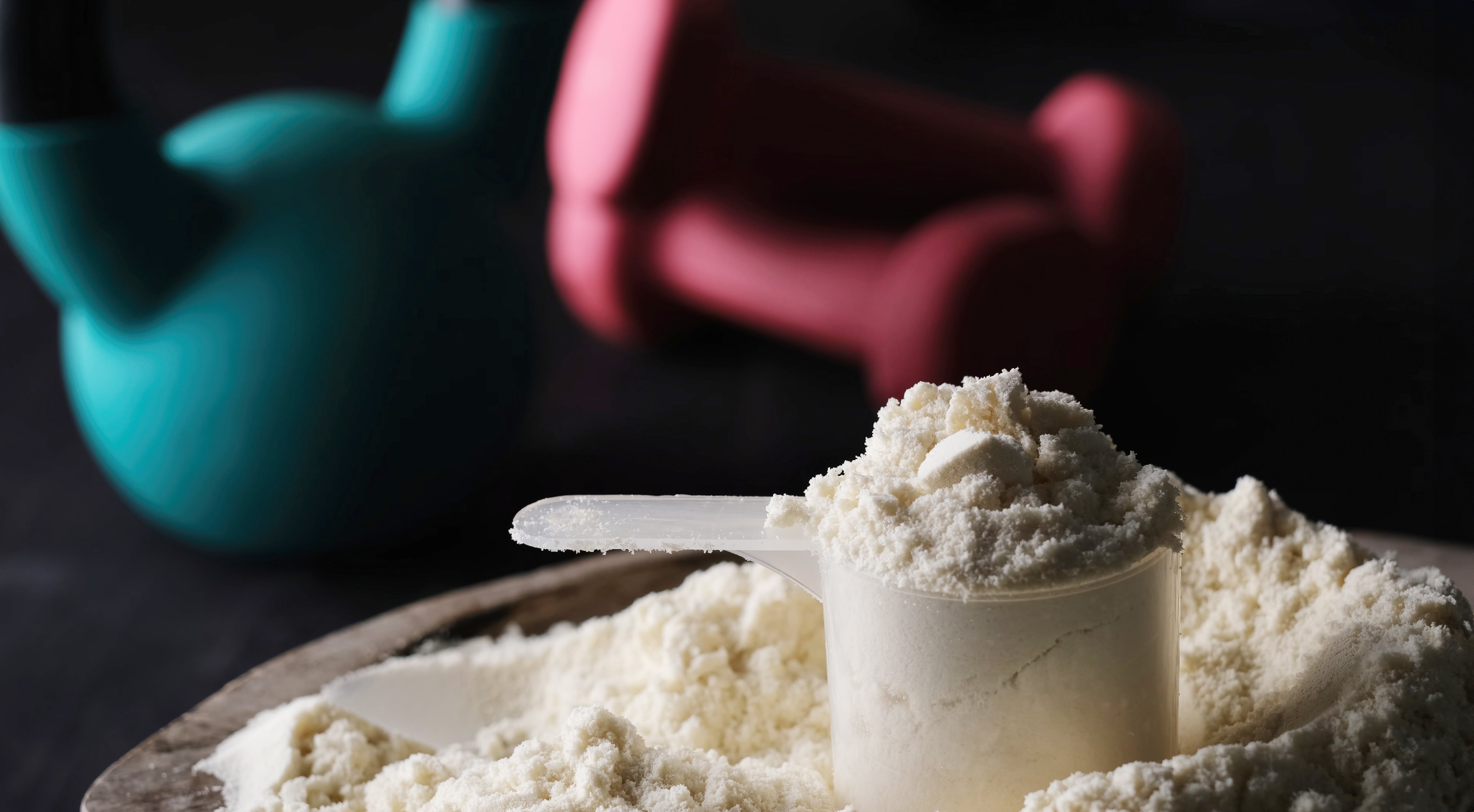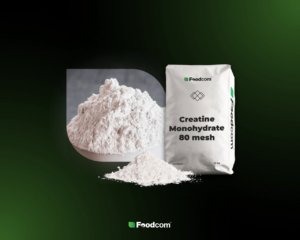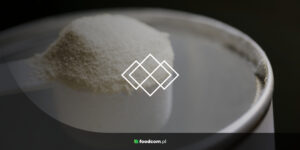- The choice of creatine form in the B2B segment depends on the intended goal, target group, and application of the final product.
- Due to its proven effectiveness and affordable price, creatine monohydrate is often the preferred form.
- Creatine malate is another form that shows greater chemical stability and is often better tolerated.
- The solubility and absorption of the product depend not only on the form of creatine but also on its particle size (“mesh”).
Creatine is one of the most commonly used ingredients in dietary supplements for athletes and physically active people. There are several forms of this compound available on the market, the most popular being creatine monohydrate and creatine malate. In this article, we will compare these two forms in terms of performance, technological properties and use in the supplement industry, highlighting aspects such as differences in chemical structure, bioavailability, solubility and market preference.
What is creatine and where is it used?
Creatine – what is it and how does it work? It is an organic compound made up of three amino acids: arginine, glycine and methionine, naturally occurring in the human body. It is mainly found in the muscles, where it is stored in the form of phosphocreatine, whose primary function is the rapid resynthesis of ATP – the main cellular energy carrier needed for muscle work under conditions of high energy demand.
Creatine supplementation supports short-term, intensive exercise, which is why it has gained popularity among athletes, especially those training in strength sports, bodybuilding, sprints or jumping. Its effectiveness in increasing strength and muscle mass and anaerobic capacity has been confirmed by numerous clinical studies. Today, creatine is also used in recovery products, supplements for women, the elderly and patients suffering from neurodegenerative diseases.
In which forms is creatine found?
There are several forms of creatine available on the market, the two predominant ones being creatine monohydrate and creatine malate. Although the main effect of both is the same – increasing energy availability to the muscles – they differ in their chemical structure, physicochemical properties and tolerance by the body.
In addition, you can find forms of creatine such as:
- creatine hydrochloride (HCL),
- magnesium chelate,
- creatine pyruvate (citrate),
- ethyl creatine (CEE),
- cre-alkyn,
- alpha-ketoglutarate,
- creatine nitrate.
Creatine monohydrate versus creatine malate – similarities and differences
Creatine monohydrate is the purest and simplest form of creatine – it is simply a creatine molecule bound to a water molecule. It is the most clinically tested creatine, with dozens of studies confirming its effects. This form is versatile, well absorbed and effective, which is why it is so common in industrial applications.
Creatine malate, on the other hand, is a compound of creatine with malic acid – usually in the form of tri- malate (TCM). This compound has slightly different performance characteristics: better stability, greater solubility in water and potentially less risk of subcutaneous water retention.
In summary, what is the difference between monohydrate and malate? Thanks to its characteristics, malate is often better and faster absorbed, causes less gastric discomfort and is less likely to lead to water retention in the body, as can happen when taking creatine monohydrate. Attention is also drawn to its better taste profile. Monohydrate, on the other hand, is better studied and therefore considered the safest, while being similarly effective and more affordable.
It is not only the type of creatine that matters – what else should you look out for?
For manufacturers of dietary supplements or other creatine products (drinks, capsules, protein bars), an important technological parameter is the degree of powder fineness (“mesh”).
Creatine 80 mesh is a less finely ground product, with slightly worse solubility, but cheaper to produce. It can be used in capsules or tablets, where solubility is not a key parameter.
Creatine 200 mesh is a very finely ground powder with better solubility. It is ideal for bulk and water-soluble forms. Although the level of fineness does not directly affect the bioavailability of creatine in the body, it is important in the design of the final product, its texture, appearance and convenience of use.
Which creatine to buy and what should guide your choice?
The choice of type and form of creatine should depend on several factors, such as:
- the target group – this could be professional athletes, amateurs, women, young people or those on a reduction diet – each may react differently to water retention and expect different effects;
- the form of the final supplement – powdered creatine is the predominant form, although some manufacturers use creatine in capsule form or as a drink supplement, which may require specific physical parameters of creatine (mesh, solubility, hygroscopicity);
- price and availability – creatine monohydrate is cheaper and more readily available on the global market, while malate is more commonly used as a premium ingredient.
Which creatine to buy? In the B2B segment, the dominance of creatine monohydrate is still observed. The reason is its cost-effectiveness, availability and sound science. Creatine malate is gaining popularity in premium segment products and specialised supplement lines, e.g. for recreational trainers, women or users expecting fewer side effects.
Both creatine monohydrate and creatine malate have their advantages and uses in the supplement market. The key factor when choosing creatine is to match the form to the needs of the end user and the technological requirements of the product. The purchasing decision should take into account not only the price, but also parameters such as mesh, solubility and customer expectations.









